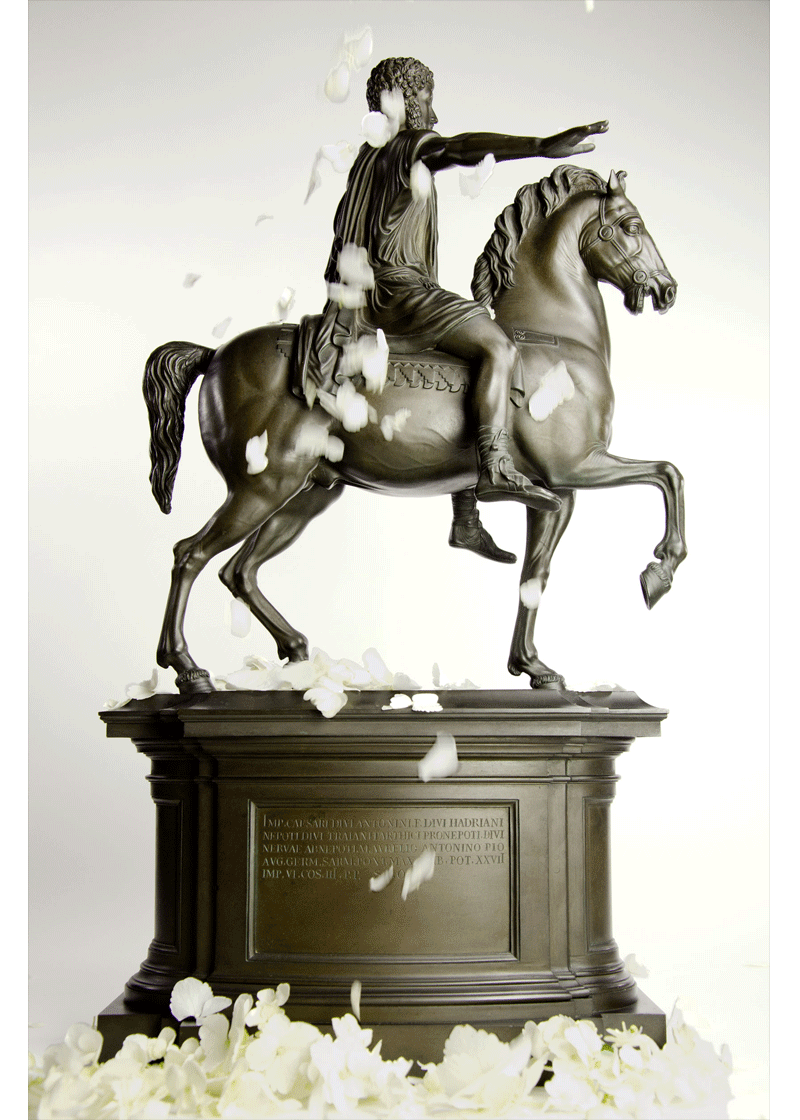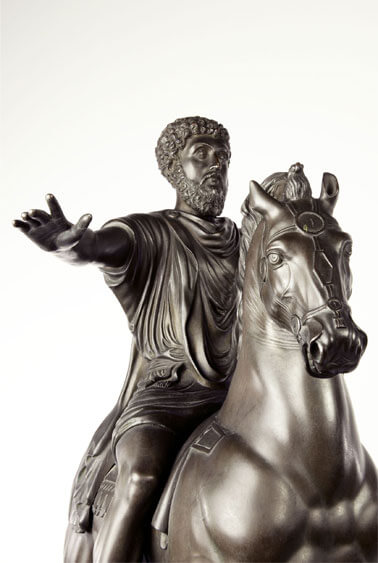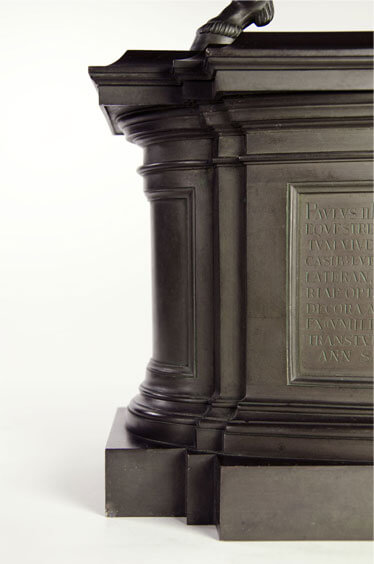Equestrian Statue of Marcus Aurelius
Hofgarten & Jollage
patinated bronze, ca. 1830
23-1/2″ high
- Literature
- SFO Airport Museum, All Roads Lead to Rome, (2017), illus. p. 76.
- Exhibition
- SFO Airport Museum, All Roads Lead to Rome: 17th-19th Century Souvenirs from the Collection of Piraneseum, January 24-August 13, 2017
This impressive, peerlessly executed bronze model of the monument at the center of Rome’s Michelangelo-designed Piazza Campidoglio is among the concluding works of the city’s leading founders of souvenir architectural models, Prussian émigrés Wilhelm Hopfgarten and Ludwig Jollage. Unlike others of the firm’s exquisite miniatures, which were often in gilded bronze, it appears this replica was produced solely in this rich, dark patina.
We believe this model dates prior to Jollage’s death in 1837. Subsequent castings are engraved “W. Hopfgarten, Roma,” and later still, with the name of the successor firm, Hopfgarten and Dressler. There is no more detailed model of this ancient monument. Note the crisp, tight curls of Aurelius’ hair and elaborate folds of his toga. Note, even, the folds in his mount’s skin and protruding blood vessels at his chest.
The cityscape of ancient Rome featured a great number of equestrian monuments. However, that of Maucus Aurelius was the only one not to be melted down, owing, say historians, to a cretin’s mis-identifying the Emperor as the Christian Emperor Constantine.
The ancient statue sits upon a base designed by Michelangelo, a piece of mesmerizing suavery carved along its two long sides with Latin text. The model repeats not only the text, but also the method of its inscription. The gently-curving surfaces on which this text is written are, in fact, separate bronze plates mounted to the reverse of their respective “windows.” When we inspected the interior of its base, we noted the reverse sides of these plates were also inscribed with the identical text, though not, apparently, to the exacting standards of Hopfgarten and Jollage.
Bronze models of this monument appear as early as the 15th century, the most notable of these early examples being those cast by the Florentine artist Antico. All of these, though, were relatively miniature miniatures, just a few inches tall. This model, owing to its impressive presence, leads viewers to experience something of the emotional, as well as intellectual, force of ancient Rome.







